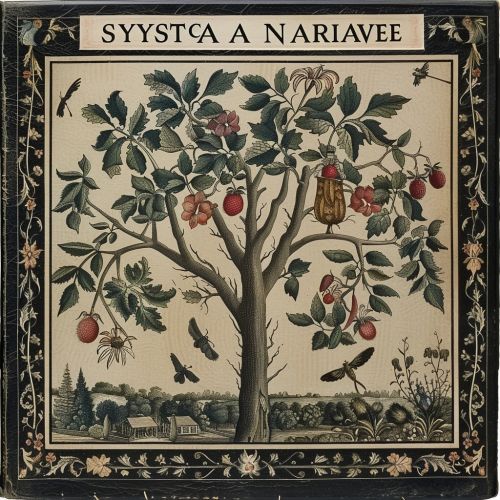Systema Naturae
Introduction
Systema Naturae is a seminal work in the field of biology, published by the Swedish botanist, zoologist, and physician Carl Linnaeus in 1735. The work is renowned for its introduction of binomial nomenclature, a system for naming species that is still in use today. This revolutionary approach to taxonomy, the science of classification, has had a profound impact on the biological sciences, providing a standardized method for the identification and classification of the vast diversity of life on Earth.


Historical Context
In the early 18th century, the study of natural history was a rapidly evolving field. The exploration of new territories around the globe was leading to the discovery of an ever-increasing number of plant and animal species. However, the classification and naming of these species were inconsistent and often confusing. Linnaeus' Systema Naturae sought to address this issue by introducing a uniform system for naming species, which he termed binomial nomenclature.
Binomial Nomenclature
The binomial nomenclature introduced in Systema Naturae is a two-part naming system that uses Latin grammatical forms. Each species is given a generic name (genus) and a specific name (species). The genus name is always capitalized, while the species name is not, and both are italicized. This system provides a unique and universally recognized name for each species, avoiding the confusion caused by common names, which can vary by region and language.
Taxonomic Hierarchy
In addition to binomial nomenclature, Systema Naturae also established a hierarchical system for classifying species. This system, known as the Linnaean taxonomy, categorizes species into a series of nested groups based on shared characteristics. The basic hierarchy, from broad to specific, is: Kingdom, Phylum, Class, Order, Family, Genus, and Species. This structure allows for a clear and organized understanding of the relationships between different species.
Editions and Expansions
The first edition of Systema Naturae was a modest pamphlet of only eleven pages. However, Linnaeus continually revised and expanded the work throughout his lifetime. The tenth edition, published in 1758, is considered the starting point of zoological nomenclature as it is today. This edition included over 4,000 animal species and 7,700 plant species, demonstrating the vast scope of Linnaeus' work.
Impact and Legacy
The impact of Systema Naturae on the field of biology cannot be overstated. The binomial nomenclature and taxonomic hierarchy introduced by Linnaeus provided a standardized and organized system for classifying the natural world. This system has been adopted worldwide and continues to be used in the biological sciences today. Despite some modifications and additions to accommodate new discoveries and advances in our understanding of life on Earth, the basic principles of Linnaeus' system remain intact.
Criticisms and Controversies
While Systema Naturae has been widely adopted and praised for its contributions to biology, it has not been without criticism. Some critics argue that the Linnaean system is overly simplistic and does not adequately account for the complexity and diversity of life. Others have pointed out that the system is anthropocentric, placing humans at the top of the hierarchy. Despite these criticisms, Systema Naturae remains a foundational work in the field of biology.
